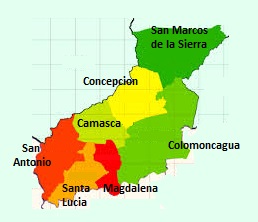Many years ago, I ran cultural exchange programs in Puerto Rico. Carmen Judith Nine Curt, a Puerto Rican educator who specialized in cultural, non-verbal communication, often offered training in cultural differences. One afternoon, I sat next to a team leader. At a particular point in the presentation, he became very emotional and I noticed tears welling in his eyes. After the presentation, I sensitively asked what had caused his sadness. An overwhelming sense of guilt overcame him as Professor Curt explained cultural differences relative to eye contact. In the US, eye contact is valued as a sign of respect or attentiveness. In Puerto Rico, as in many other cultures, direct eye contact between opposite genders is generally understood as suggestive, and between the same genders as a threat. (Non-Verbal Communication in Puerto Rico, Dr. Carmen Judith Nine Curt, May 1984, http://files.eric.ed.gov/fulltext/ED258468.pdf) He recalled his days as a high school teacher. He had disciplined many Puerto Rican girls and boys for not looking him in the eye. He had made them stay after class and forced them to look directly into his eyes. He had unintentionally disrespected them by assuming that his cultural norm was universal. Lesson learned.
Shoulder to Shoulder deeply respects Hondurans and their culture. In many ways we, North Americans from the US, share a great deal with Hondurans: our aspirations for a just society, our desire to assist persons violated by poverty, a hope that our lives are purposely lived, and much more. Still, we look at the world slightly differently, we consider different approaches to problems, and we sometimes misunderstand one another. But, if we are willing to invest in a long-term relationship of working shoulder to shoulder to empower substantive change, we will find common ground, grow in mutual respect, and learn from one another. Relationships among persons from the same culture are difficult. Relationships between cultures are exponentially more difficult. It would be so much easier to simply assess the problem, design the solution, create a budget, send money, and tell the Hondurans what to do. No involvement, no partnership, no commitment to relationship. It is in fact easier, but it doesn’t work. Plenty of organizations have tried this, and still do. Like water poured on a duck’s back, it runs right off. Shoulder to Shoulder has chosen the less traveled path: investment, engagement, and commitment. Not an easy path, but certainly the meaningful one.

I was reflecting on all of this as Laura and I attended the inauguration ceremony of Shoulder to Shoulder’s new Convenio agreement with the Honduran Ministry of Health on Tuesday, April 28th in Camasca. This was an amazing occurrence. Overnight, Shoulder to Shoulder has literally doubled its responsibility in providing health care. Camasca and Colomoncagua are now included in our system, stretching our coverage south of Yamaranguila to the El Salvador border, from 37,000 persons to 69,000 persons. Two major clinics, one in Camasca and one in Colomoncagua, a birthing center in Camasca, and three satellite clinics in Colomoncagua have been assumed in Shoulder to Shoulder’s health system. Four doctors, six health promoters, three professional nurses, two dentists, two lab technicians, and 16 auxiliary nurses have been added to our health personnel. This is a phenomenal expansion. Shoulder to Shoulder is now essentially the exclusive provider of health care in the Frontera of Intibucá.

“Wow,” I thought as I arrived in Camasca at around 8:45 AM for the inaugural meeting scheduled for 9:00 AM. Laura and I, the Americans, were the only ones there by 9:00 AM. Over the next forty-five minutes a few people stroll in, but the major players, the doctors, the administrators, the mayors, the Ministry of Health personnel, have yet to arrive. I realize that this is how it is done in Honduras. A major meeting scheduled for 9:00 AM will not start prior to 10:30 AM. Though my cultural sensitivities are offended, though I want to scream “What about efficiency, good management, and accountability,” this is useless. If I actually complained, it would be met with expressions of incredulity. If you didn’t want to stand around and wait, why did you come on time? Still, I’m thinking of all the other things I could be doing. This is annoying to me. But, to a Honduran, this is valuable, the way things are done. So, I grin and bear it. As I wait, something else strikes me. As I boil inside and anxiously look around the room, I realize something else. Laura, I, and one other person, Kate, are from the US. Everyone else here is Honduran. Though this was the dream of people from the US, it is being realized by Hondurans. This is empowerment. This is development. This is a shoulder to shoulder enterprise.

The meeting finally starts sometime shortly after 10:30 AM. The presentations from Shoulder to Shoulder, the local governments, and the Ministry of Health are all celebratory and congratulatory. It emphasizes our capabilities and possibilities all in a positive tone. The questions and comments from the audience express fears and anxieties. There are many challenges of implementation yet to be faced. I guess they will be faced, hammered out, as we walk together on this journey. But I’m not thinking about our celebratory presentations or even the challenges of implementation we’ve yet to face. I’m thinking about how we arrived here at all. I’m thinking about the early years of our journey when US university brigades were the only health care in this huge swath of territory. There were no systems of health care save for a couple of gringo doctors and nurses who visited isolated towns without roads, electricity, or water. What tremendous cultural challenges they must have faced? I imagine them holding a community meeting with locals. The Hondurans arrive two hours after the scheduled time. Maybe those brigades felt frustration and anger. Maybe they chastised the people. Maybe they managed to hold their breath. Whatever it was, however great the cultural discord, they must have managed to stay the course, move beyond the cultural distance, and form relationships of mutual respect and empowerment. They must have shared their dreams, because these dreams are realized today among competent Honduran professionals. The shoulder to shoulder commitment today sustains a system of service and development anchored among the people of southern Intibucá.

Convenio, not easily translated into English, is derived from Latin and means to come together. The word Covenant is a derivation. Covenant is much more than a contract. A covenant implies not only the commitment of a task or property, but the willingness to give oneself over. This means challenge and personal transformation. It involves risk, it is difficult, and most of us will avoid this level of commitment. When divergent cultures are involved, it is wrenching. Why would anyone enter into a covenant relationship? Because it is the only way to effect substantive and meaningful change. New convenios found in honest cultural exchange await as we journey shoulder to shoulder.


